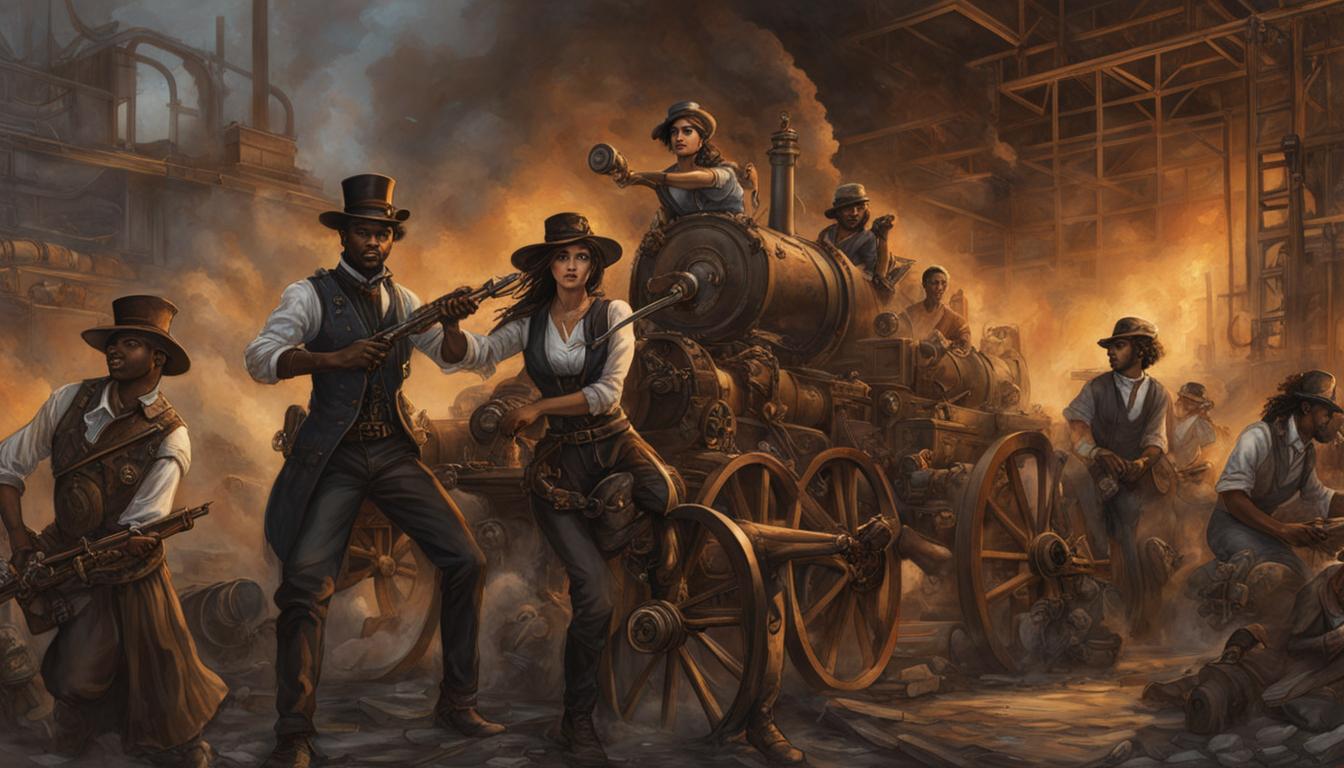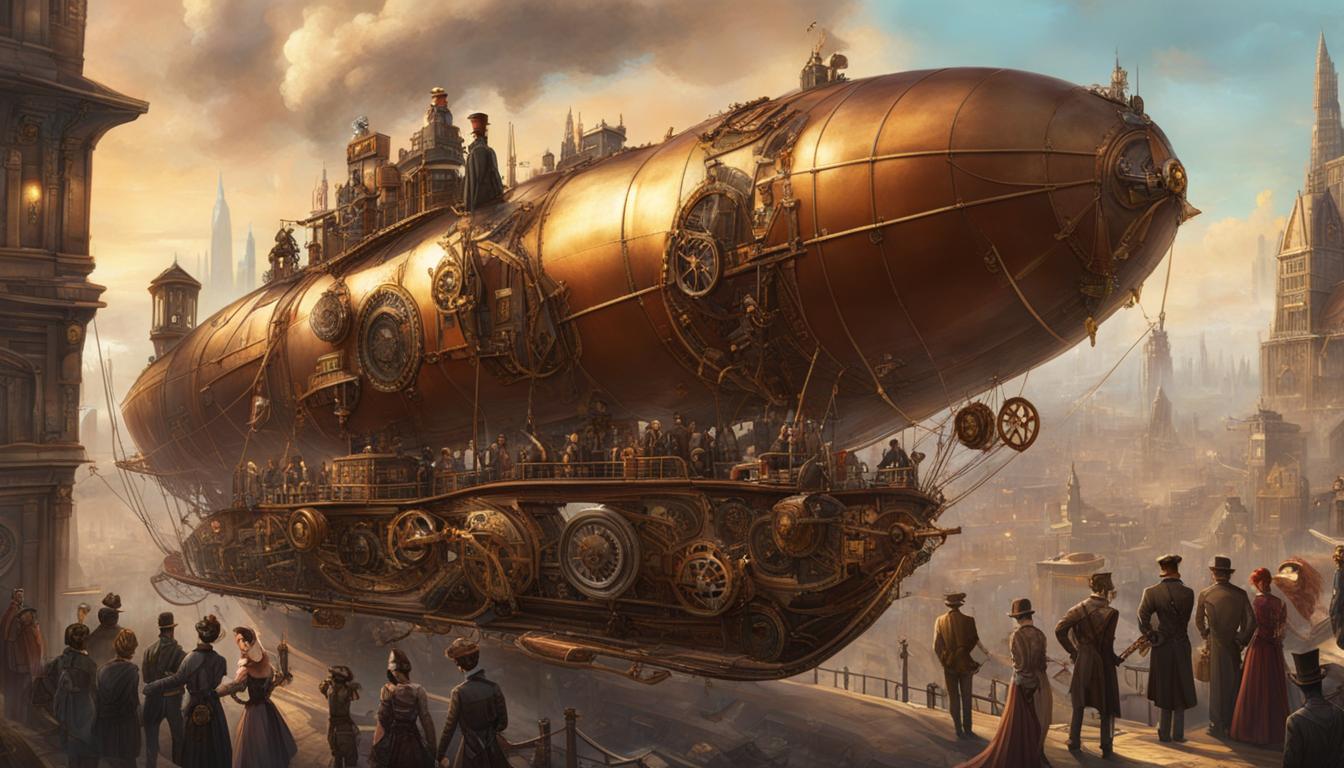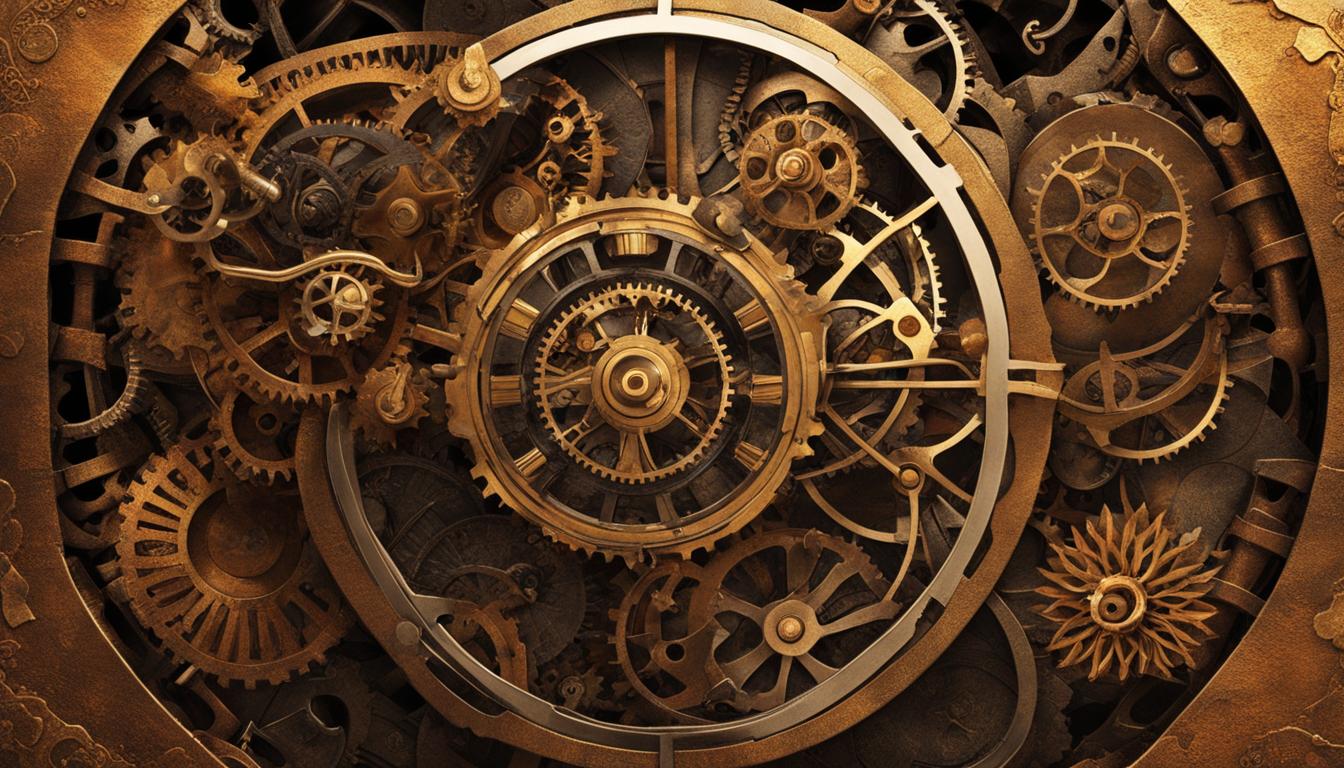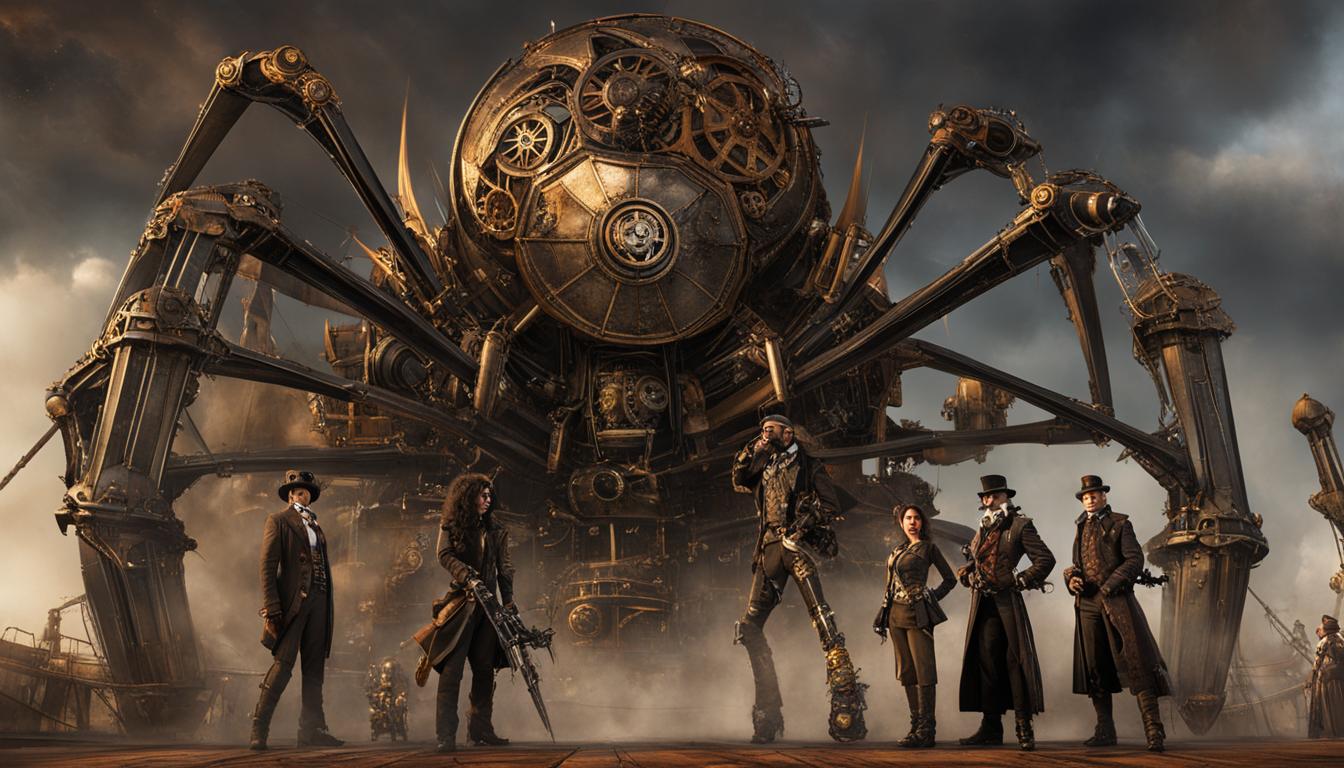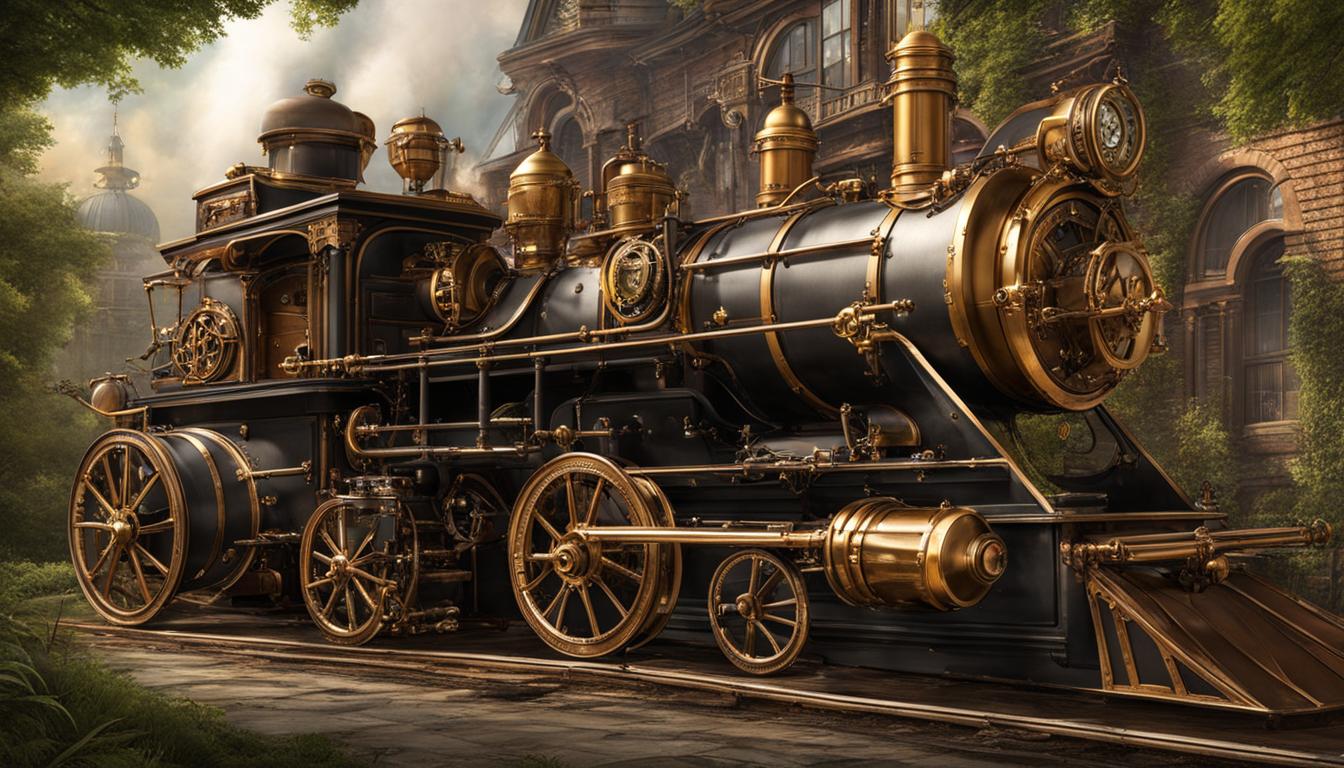Steampunk, a genre that blends history with fantasy, not only entertains but also grapples with the weighty issues of the past. Delving into sensitive topics such as slavery, colonialism, and gender inequalities, it offers a fresh and thought-provoking take on historical injustices. In this section, we will explore how steampunk navigates these treacherous waters, presenting alternative perspectives and challenging traditional narratives.
Key Takeaways:
- Steampunk provides a unique platform to address historical injustices.
- It reimagines history, offering alternative perspectives on slavery, colonialism, and gender inequalities.
- Steampunk challenges traditional narratives, allowing for reflection, redemption, and justice.
- This genre explores themes of social hierarchy, workers’ rights, and the pursuit of a more equitable society.
- By reshaping the past, steampunk shapes the future, making it a compelling genre for both readers and writers.
Reimagining History: Addressing Slavery in Steampunk Settings
Steampunk, with its imaginative blend of history and fantasy, offers a unique and thought-provoking lens through which to address the dark history of slavery. In steampunk narratives, authors have the freedom to reimagine historical settings, exploring the impact of slavery on individuals and societies in new and compelling ways. By doing so, they provide a platform for reflection on the injustices of the past and the potential for redemption and justice.
One of the key aspects of steampunk’s perspective on slavery is its ability to discuss workers’ rights within the context of oppressive social hierarchies. Through the fantastical elements of the genre, authors can challenge the traditional power structures of historical periods and shed light on the struggles faced by those at the bottom of the societal ladder. This exploration of workers’ rights not only adds depth and realism to the narratives but also serves as a means of questioning the fairness and morality of the systems that allowed for such exploitation.
“Steampunk provides a platform for authors to address the dark history of slavery in unique and thought-provoking ways.”
Moreover, steampunk’s reimagining of history also allows for the exploration of themes related to historical oppression. By presenting alternative perspectives and challenging traditional narratives, authors can shed light on forgotten or silenced voices. Through these narratives, steampunk brings historical oppression to the forefront, encouraging readers to confront uncomfortable truths and consider the lasting legacies of slavery.
| Themes | Examples |
|---|---|
| Workers’ Rights | Characters fighting for fair treatment and improved working conditions |
| Redemption and Justice | Seeking to rectify the injustices of the past and bring about a more equitable future |
| Oppression and Resistance | Exploring the struggles faced by individuals and communities and their fight for liberation |
In summary, steampunk offers a unique and compelling approach to addressing slavery in historical settings. By reimagining history with a steampunk twist, authors can delve into the impact of slavery, discuss workers’ rights, and bring historical oppression to the forefront. Through these narratives, steampunk challenges traditional perspectives, prompts introspection, and provides a platform for meaningful conversations about the past.
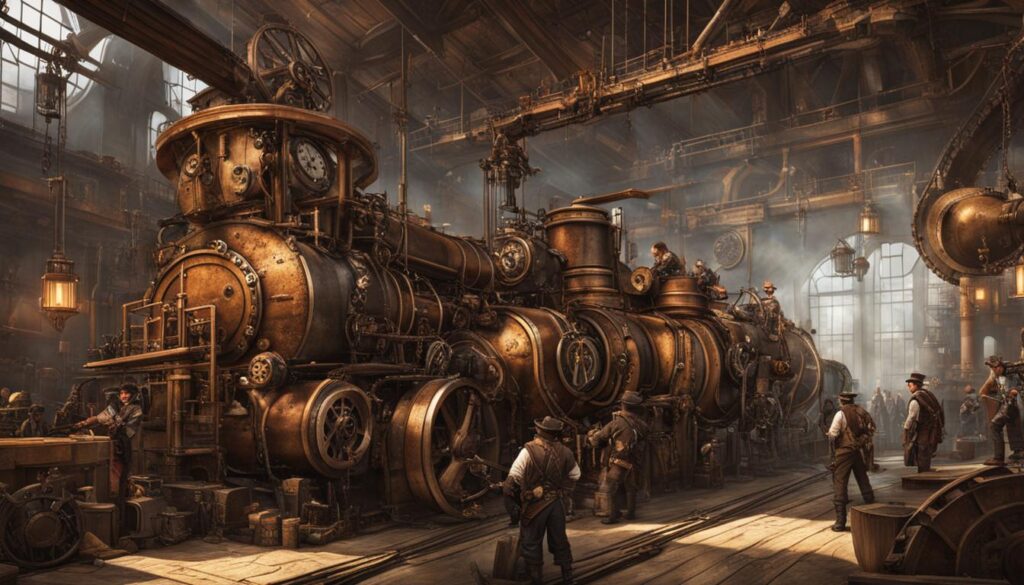
Challenging Colonial Wrongs: Steampunk’s Perspective
Steampunk narratives have emerged as a powerful tool for challenging the colonial wrongs of the past. By reimagining historical periods and incorporating fantastical elements, steampunk authors provide a platform for the representation of minorities and the exploration of discrimination and justice in their tales. These narratives disrupt traditional narratives, offering a fresh perspective on the injustices faced by marginalized communities.
Through steampunk worlds, authors create diverse and inclusive societies that challenge the oppressive systems of the colonial era. They give voice to those who were silenced and tell stories of resistance, empowerment, and the fight for equality. By showcasing the struggles and triumphs of underrepresented groups, steampunk narratives shine a light on the lasting impact of colonialism and ignite conversations about social justice.
Representation of Minorities in Steampunk Worlds
In steampunk narratives, the representation of minorities takes center stage, providing much-needed visibility and dismantling the historical erasure that has pervaded mainstream historical narratives. Authors depict characters from various racial and ethnic backgrounds, showcasing the diversity that existed during these time periods. By doing so, steampunk challenges the dominant colonial narrative that often marginalizes non-white communities.
“Steampunk gives a voice to those who have been historically silenced and allows us to envision a world where everyone’s stories are heard and valued.” – Renowned steampunk author, Rachel Hammond
These tales emphasize the resilience and agency of minority characters, offering inspiration to readers who may feel marginalized in their own lives. Steampunk narratives present an alternative reality where individuals from all walks of life can thrive, challenging the colonial structures that perpetuated discrimination and oppression.
| Steampunk Works | Representation of Minorities |
|---|---|
| “Clockwork Heart” by Anika Delacroix | Portrays a biracial protagonist navigating a world filled with racial tensions, highlighting the challenges faced by marginalized individuals. |
| “The Brass Revolution” by Samuel Hawthorne | Features a diverse ensemble cast that includes characters from various ethnic backgrounds, fostering a sense of inclusivity and representation. |
| “Gears of Justice” by Maya Sullivan | Explores the experiences of marginalized communities in a steampunk city, shedding light on issues of discrimination and the pursuit of justice. |
The representation of minorities in steampunk narratives not only challenges colonial wrongs but also acts as a catalyst for important conversations surrounding equity and justice. By presenting alternative visions of history, steampunk encourages readers to question existing power structures and imagine a more inclusive and equal world.

Ultimately, steampunk’s approach to gender inequalities is a testament to its ability to transcend time and space, allowing us to reflect on our own society’s progress while inspiring us to actively work towards a more equitable future.
Social Hierarchy and Justice in Steampunk Worlds
Steampunk narratives often delve into themes of social hierarchy and justice, providing a unique perspective on these issues. By reimagining historical periods with a fantastical twist, steampunk authors challenge the traditional class structures of the past and question the fairness of such systems. These narratives explore the impact of social inequality and provide a platform for discussions on workers’ rights and the pursuit of justice.
One way in which steampunk tackles social hierarchy is by highlighting the struggles and injustices faced by marginalized communities. Through diverse and inclusive worlds, authors give a voice to individuals who were historically oppressed, shedding light on their experiences and advocating for their rights. This approach allows for a reflection on the flaws of the past and offers the possibility of a more equitable society.
“In a world where airships soar and clockwork automatons roam the streets, the division between the rich and the working class is stark. Steampunk narratives often explore the stark contrast between opulent upper-class lifestyles and the struggles of the working class.”
Steampunk also provides a platform for discussing workers’ rights. By examining the oppressive social hierarchy of historical periods, these narratives shed light on the exploitation and mistreatment of workers. Through the lens of steampunk, authors can address issues such as unfair labor practices, unsafe working conditions, and the fight for better treatment and representation.
| Steampunk Narrative Themes | Examples |
|---|---|
| Resistance against social oppression | Steampunk Rebellion, Clockwork Revolution |
| Exploration of workers’ rights | The Gears of Equality, Steel and Solidarity |
| Quest for justice and equality | The Brass Key, Shadows of Injustice |
Through the exploration of social hierarchy and justice, steampunk narratives offer a thought-provoking and entertaining experience for readers. By challenging the norms of the past and envisioning a more just society, steampunk inspires conversations about the importance of equality and fairness in our own world.
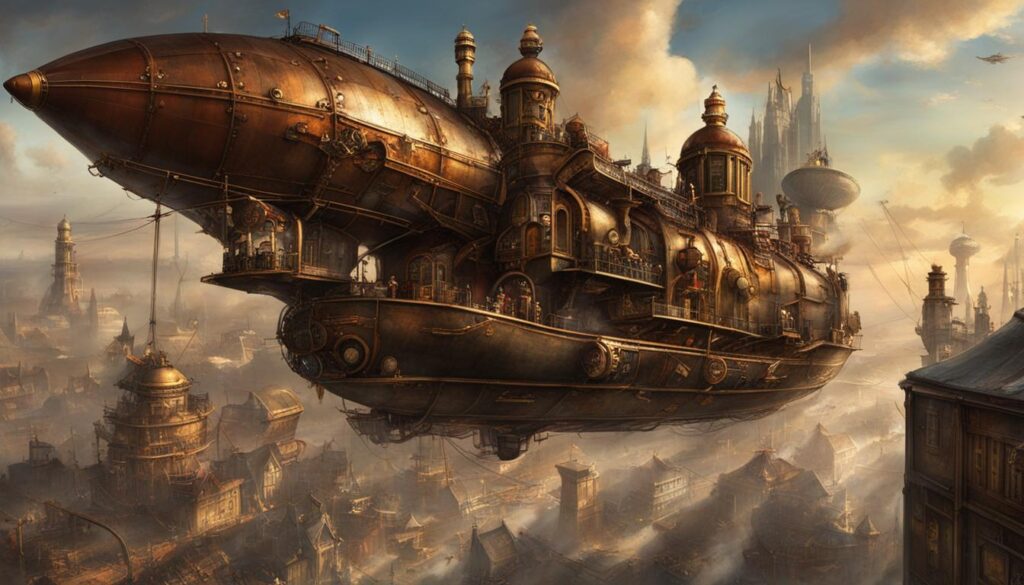
Conclusion
Steampunk emerges as a genre that boldly confronts historical injustices, offering a captivating and imaginative approach to complex social issues. Through its unique perspective, steampunk challenges traditional narratives and redefines our understanding of the past. By reimagining history with a fantastical twist, the genre addresses sensitive topics such as slavery, colonialism, gender inequalities, and social hierarchy.
Steampunk’s perspective on historical injustices is both thought-provoking and enlightening. It provides a platform for authors to delve into the dark chapters of human history, offering alternative narratives and opportunities for redemption. By portraying diverse and inclusive worlds, steampunk sheds light on the discrimination and injustices faced by marginalized communities throughout history.
One of the most intriguing aspects of steampunk is its stance on social issues. With a retrofuturistic approach, it challenges traditional gender roles and presents us with strong, empowered female characters. Steampunk not only highlights the struggles faced by women in the past but also provides a platform for examining and advocating for gender equality.
In conclusion, the steampunk genre’s ability to tackle historical injustices and social issues makes it a captivating and significant form of storytelling. By reshaping the past and envisioning a more equitable future, steampunk invites readers and writers alike to question the intricacies of our society and strive for a better world.
FAQ
How does steampunk handle historical injustices?
Steampunk provides a unique opportunity to explore and address historical injustices such as slavery, colonialism, and gender inequalities. Through reimagined historical settings, steampunk narratives offer alternative perspectives, challenge traditional narratives, and provide opportunities for reflection, redemption, and justice.
How does steampunk address the issue of slavery?
Steampunk delves into the dark history of slavery by reimagining historical settings and exploring the impact of slavery on individuals and societies. It offers a fresh perspective on the injustices of the past, providing a platform for discussing workers’ rights and the oppressive social hierarchy that existed during these historical periods.
How does steampunk challenge colonial wrongs?
Steampunk challenges colonial wrongs by reimagining the colonial period and giving a voice to marginalized communities. By creating diverse and inclusive worlds, steampunk authors address discrimination and injustices faced by minorities in history. These narratives explore themes of resistance, empowerment, and the pursuit of justice.
How does steampunk address gender inequalities?
Steampunk takes a retrofuturistic approach to civil rights issues, including gender inequalities. It challenges traditional gender roles of historical periods and presents strong, empowered female characters. By reshaping history with a fantastical twist, steampunk offers a fresh perspective on the struggles faced by women in the past and provides a platform for exploring gender equality and the fight against historical biases.
How does steampunk portray social hierarchy and justice?
Steampunk questions the fairness of social hierarchy by challenging the rigid class structures of historical periods. It addresses issues of social inequality, workers’ rights, and the pursuit of justice. Through these narratives, steampunk offers an opportunity to reflect on the flaws of the past and imagine a more equitable society.

